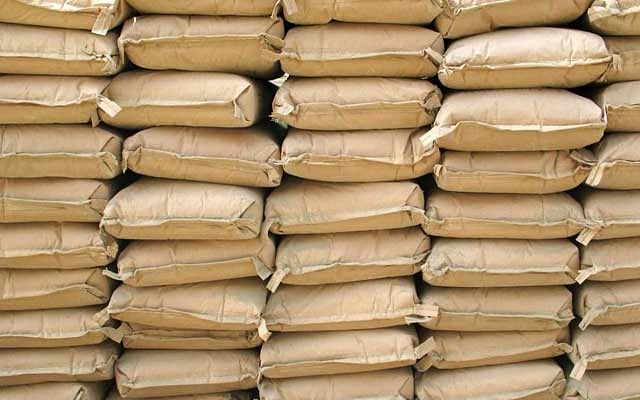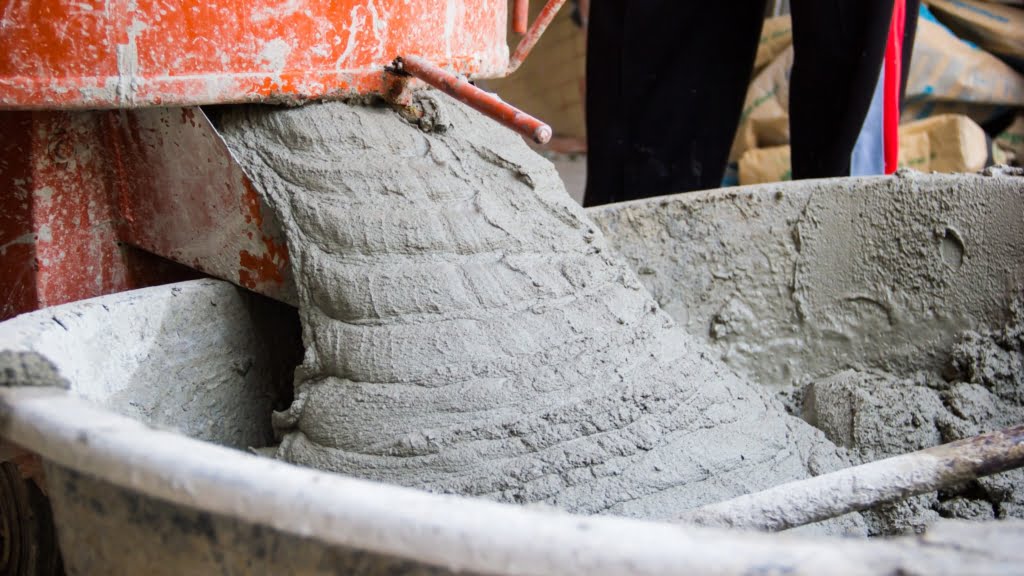সিমেন্টর গুনগত মান বোঝার উপায়

আমরা বিভিন্ন ব্রান্ডের সিমেন্ট ব্যবহার করি।
কিন্তু সিমেন্টর গুনগত মান ভালো না খারাপ তা বুঝি না।
সিমেন্ট টি কেমন তা বুঝার জন্য
1.লেব টেস্ট ও
2.ফিল্ড টেস্ট করা যায়।
সিমেন্টের বস্তার গায়ে লিখা দেখে ও আমরা সিমেন্ট কোন ক্লাসের বুঝতে পারব।
নিচে একটি সিমেন্টের ছবি দেওয়া আছে।
তাতে লিখা আছে CEM-ll/B-M এবং 42.5 N
এটি সিমেন্ট ২ টাইপের B শ্রেণির অন্তর্ভুক্ত।
Cement
ইউরোপিয়ান স্ট্যান্ডার্ড EN 197-1 (2001) অনুসারে সিমেন্ট ৩ ধরনের
CEM-l 95% clinker রয়েছে।
CEM-ll
Type CEM-ll/A -clinker 80 to 95%
CEM-ll/B – clinkee 65 to 79%
CEM-lll
Type CEM-lll/A – clinker 35 to 64%
CEM-lll/B – clinker 20 to 34%
CEM-lll/C – clinker 5 to 19%
Strength class অনুসারে ৩ ধরনের সিমেন্ট বাজারে পাওয়া যায়।
- 32.5 N
- 42.5 N
- 52.5 N
32.5 means 32.5 N/mm^2
২৮ দিনে উক্ত শক্তি পাওয়া যায়।
✅✅#সিমেন্ট ২৮ #দিনে অর্জিত #শক্তিঃ-
N/ mm^2 থেকে পিএসআই তে কিভাবে কনভার্ট করে?
ans:-
Let, 32.5 N/mm^2= 4712 Psi, How?
We know, 1Mpa = 145 Psi,
So, 32.5 Mpa = 32.5×145 Psi = 4712 Psi,
অথবা, 32.5N/mm^2 সমান কত psi ?
So, 32.5×145= 4712 psi
অর্থাৎ ৩২.৫ গ্রেডের সিমেন্ট ২৮ দিনে 4712 psi শক্তি অর্জন করবে।
⛔অনেক সময় 42.5 N/R/SR লিখা থাকে।এটা একটি সংকেত।
N=Normal- ordinary early cement
R=Rapid- High early cement
SR= sulfate resisting cement
এখান থেকে সিমেন্ট কোন গ্রেডের তাও বুঝতে পারব।
সাধারণত ৩ গ্রেডের সিমেন্ট ব্যবহার করে থাকি,
কিন্তু বাংলাদেশে আমরা সচরাচর ৩ (তিন) ধরণের সিমেন্ট পেয়ে থাকি।
সাধারণ পোর্টল্যান্ড সিমেন্ট (Ordinary Portland Cement – CEM I)
পোর্টল্যান্ড কম্পোজিট সিমেন্ট (Portland Composite Cement – CEM II)
ব্লাস্ট ফার্নেস সিমেন্ট (Blast Furnace Cement – CEM III)
✅💗✅বস্তার গায়ের লেখা দেখে OPC ও PCC সিমেন্ট চিনার উপায় –
1.ক) OPC = ordinary portland cement
(a) ক্লিংকার ৯৫% – ১০০% ।
(b) জিপসাম ০% – ০৫% ।
2.ক) PCC = portland Composite cement
(a) ক্লিংকার ৬৫% – ৭৯%।
(b) স্লাগ,ফ্লাই এ্যাশ ও লাইম স্টোন ২১% – ৩৫%।
( c) জিপসাম ০% – ০৫% ।
সিমেন্ট বলতে অনেক কিছুই বোঝায় কিন্তু আমরা যেগুলো বাজারে সাধারনত দেখি এবং আমরা ব্যাবহার করি সেটাকে বলা হয় পোর্টল্যান্ড সিমেন্ট। সাধারনত দুই ধরনের পোর্টল্যান্ড সিমেন্ট বাংলাদেশে পাওয়া যায়। অর্ডিনারি পোর্টল্যান্ড সিমেন্ট (OPC) এবং পোর্টল্যান্ড কম্পোজিট সিমেন্ট (PCC) হচ্ছে এর শর্ট ফর্ম।
✅অর্ডিনারি কম্পোজিট সিমেন্ট (OPCঃ
মুলত ব্যাবহার করা হয় হাইরাইজ ভবনগুলোতে। এছারা পাইলিং, পানির নিচে কংক্রিটর এর কাজে, ব্রিজ এর কাজে এটি ব্যাবহার করা হয়ে থাকে। যখন কোন মাটির সয়েল টেস্ট এর রিপোর্টে মাটিতে সালফার সহ কংক্রিটের জন্য বিভিন্ন ক্ষতিকর ক্যামিক্যাল এর উপস্থিতি পাওয়া যায় তখন এই OPC সিমেন্ট সবচেয়ে কার্যকরি। এই সিমেন্ট খুবই দ্রুত সেট হয় এবং খুব সহবে ক্রাক করে না। এর জন্য ভুমিকম্প সহনিয় ভবন নির্মান করতে গেলে অনেকেই এই সিমেন্ট ব্যাবহার করে থাকেন।
OPCব্যবহারঃ–

OPC দ্রুত স্ট্রেন্থ গেইন করে বলে হাইরাইজ বিল্ডিং,রিজিট পেভমেন্ট, ব্রীজ,বানিজ্যিক ভবন,ফ্লাইওভার, রানওয়ে,ইত্যাদি গুরুত্বপূর্ন স্থাপনায় ব্যবহৃত হয়।
✅পোর্টল্যান্ড কম্পোজিট সিমেন্ট (PCC বা PPC):-
মুলত ব্যাবহার করা হয় মাটি কন্ডিশন যেখানে সাধারন থাকে এবং যেখানে ক্যামিক্যাল হ্যাযার্ড এর সমস্যা না থাকে অথবা যেখানে খুব দ্রুততার সাথে শক্ত হবার প্রয়োজন হয় না সেখানে PCC ব্যাবহার করা যায়কে। ছোট বিল্ডিং গুলোতে নিশ্চিন্তে PCC ব্যাবহার করা যায়।
এছারা যেখানে কংক্রিট এর ঢালাই এর সময় উৎপন্ন তাপমাত্রা হিসেবে ধরা হয় না সেখানে PCC ব্যাবহার করা যায়। এছারা প্লাস্টার কাজে সবত্র PCC ব্যাবহার করা হয়ে থাকে।
I shared some information about cement
We use different brands of cement.
But I don’t know if cement quality is good or bad.
To understand how cement is
1.Lab test and
- Can be field tested.
By looking at the writing on the cement bag, we can understand the class of cement.
Below is a picture of a cement.
It reads CEM-ll/B-M and 42.5 N
It belongs to B class of cement 2 type.
Cement
According to European Standard EN 197-1 (2001) there are 3 types of cement
CEM-l contains 95% clinker.
CEM-ll
Type CEM-ll/A -clinker 80 to 95%
CEM-ll/B – clinkee 65 to 79%
CEM-lll
Type CEM-lll/A – clinker 35 to 64%
CEM-lll/B – clinker 20 to 34%
CEM-lll/C – clinker 5 to 19%
There are 3 types of cement available in the market according to strength class.
- 32.5N
- 42.5N
- 52.5N
32.5 means 32.5 N/mm^2
The energy is available in 28 days.
✅
How to convert from N/mm^2 to psi?
ans:-
Let, 32.5 N/mm^2= 4712 Psi, How?
We know, 1Mpa = 145 Psi,
So, 32.5 Mpa = 32.5×145 Psi = 4712 Psi,
Or, 32.5N/mm^2 equals how many psi?
So, 32.5×145= 4712 psi
That is, 32.5 grade cement will achieve a strength of 4712 psi in 28 days.
⛔ Many times 42.5 N/R/SR is written. It is a signal.
N=Normal-ordinary early cement
R=Rapid-High early cement
SR = sulfate resisting cement
From here we can understand the grade of cement.
Generally 3 grades of cement are used.
But in Bangladesh we usually get 3 (three) types of cement.
Ordinary Portland Cement (Ordinary Portland Cement – CEM I)
Portland Composite Cement (Portland Composite Cement – CEM II)
Blast Furnace Cement (Blast Furnace Cement – CEM III)
How to recognize OPC and PCC cement by seeing the writing on the bag –
1.a) OPC = ordinary portland cement
(a) Clinker 95% – 100%.
(b) Gypsum 0% – 05%.
2.a) PCC = portland composite cement
(a) Clinker 65% – 79%.
(b) Slug, fly ash and lime stone 21% – 35%.
(c) Gypsum 0% – 05%.
Cement means many things but the one we commonly see in the market and we use is called Portland cement. Generally there are two types of Portland cement available in Bangladesh. Ordinary Portland Cement (OPC) and Portland Composite Cement (PCC) are its short forms.
Ordinary Composite Cement (OPC)
Mainly used in high rise buildings. It is used in piling, underwater concrete work, bridge work. This OPC cement is most effective when a soil test report shows the presence of various harmful chemicals for concrete including sulfur in the soil. This cement sets very quickly and does not crack very easily. For this, many people use this cement to build earthquake resistant buildings.
OPC usage:-
As OPC gains strength quickly, it is used in important structures such as high-rise buildings, rigid pavements, bridges, commercial buildings, flyovers, runways, etc.
Portland Composite Cement (PCC or PPC):-
PCC is primarily used where soil conditions are normal and where chemical hazards are not an issue or where rapid hardening is not required. PCC can be safely used in small buildings.
Also PCC can be used where the temperature generated during casting of concrete is not considered. PCC is used everywhere in plaster work.



